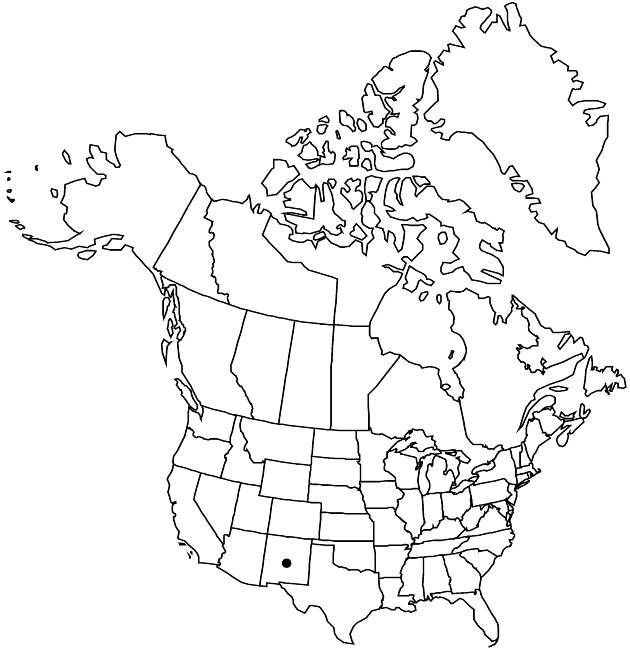Erigeron hessii
Brittonia 30: 440, figs. 1–5. 1978.
Perennials, 5–16 cm (often cespitose); rhizomatous, fibrous-rooted, thickened caudices or rhizomes branched, woody. Stems erect, loosely strigose to hirsute, eglandular. Leaves mostly basal (usually persistent); basal and proximal cauline blades oblanceolate to oblanceolate-spatulate, 20–50 (–70) × 3–9 mm, distal bractlike (mid-bases subclasping), margins entire with pair of teeth, faces glabrous or sparsely strigoso-hirsute, eglandular. Heads 1 (–3). Involucres 5–6 × 8–13 mm. Phyllaries in (2–) 3–4 series (usually purplish), coarsely strigoso-hirsute along midribs, sparsely to densely minutely glandular (glands sometimes obscured by hairs). Ray-florets 44–75; corollas white to lavender, 8–13 mm, laminae coiling slightly at tips. Disc corollas 2.6–3.1 mm. Cypselae 1.1–1.3 mm, 2-nerved, faces sparsely strigose; pappi: outer of setae, inner of 13–18 bristles.
Phenology: Flowering May–Jun.
Habitat: Andesitic dikes in otherwise rhyolitic rock, bedrock cracks in open areas, upper montane to subalpine conifer forests
Elevation: 2900–3100 m
Discussion
Of conservation concern.
Selected References
None.
